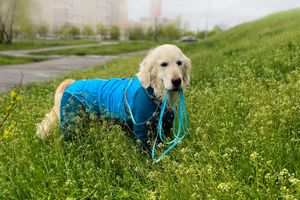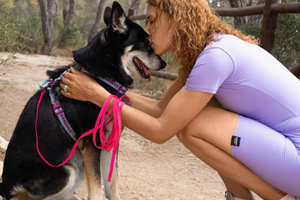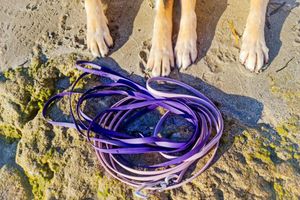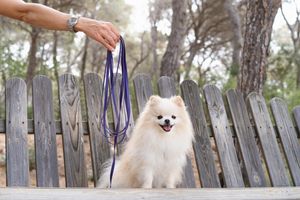Walking your dog on a leash is a pretty common everyday activity for a most dog owners.
It's obvious. It's basic.
Yet troubles happen time after time when two leashed dogs meet. The frequent cause for this troubles is pulled leash (by one or both dogs who approach each other).
The leash might be too short; the dog might be too excited about upcoming meeting with a potential friend; dog's owner might be a bit tense and unconsciously pull the dog by the leash...
The result is the same - pulled leash often provoke conflicts between dogs.
Of course there are many different possible reasons for dogs aggression on the leash. And today we won't dig too deep into the subject. But we'd like to discuss some basics. The importance of loose leash in dogs communication specifically.
Walking your dog on a loose leash:
🐕🦺 Reduces tension: When dogs approach each other on a loose leash, it creates a relaxed and non-confrontational environment. Dogs can sense tension through the leash, and if it's tight, they may interpret it as a sign of danger or aggression. A loose leash allows for a more natural and stress-free interaction.
🐕🦺 Social cues: Dogs communicate primarily through body language and subtle signals. When they meet on a loose leash, they have the freedom to engage in typical social behaviours such as sniffing, circling, and posturing. This allows them to exchange important information and establish a positive rapport.
🐕🦺 Increases confidence: Dogs that are allowed to approach each other on a loose leash feel less restrained and have the opportunity to approach at their own pace. This builds their confidence and reduces the likelihood of defensive or aggressive reactions. When they feel comfortable and in control, they are more likely to exhibit appropriate social behaviour.
🐕🦺 Positive associations: Meeting other dogs on a loose leash promotes positive associations and experiences. Dogs learn through repeated exposure and reinforcement. If they consistently meet other dogs in a calm and relaxed manner, they are more likely to associate these encounters with positive outcomes, reducing the potential for aggression.
🐕🦺 Prevents leash reactivity: Dogs that are regularly walked on a tight leash or pulled back when approaching other dogs can develop leash reactivity or aggression. The frustration and discomfort caused by the leash tension can lead to an association between other dogs and negative experiences. Meeting on a loose leash helps prevent these negative associations and allows for more harmonious interactions.
🐕🦺 Handler's influence: The handler's behaviour and body language play a significant role in a dog's response to other dogs. When the handler holds the leash loosely, they send a message to the dog that everything is okay and there is no reason to be on guard. Conversely, if the leash is tight, the dog may perceive a threat and respond defensively.
Meeting dogs on a loose leash is crucial to avoid aggression because it promotes relaxation, allows for appropriate social cues and interactions, boosts confidence, fosters positive associations, prevents leash reactivity, and influences the dog's perception of the situation. It is essential for dog owners to be mindful of leash tension and actively work towards creating a calm and controlled environment for dog-to-dog introductions.
One of the main reasons that the shortest leash at our range is 2 meters is to give all dogs the opportunity to walk on a loose leash and "politely" communicate with other dogs.
Walk safe and don’t forget to loosen your leash 🤓🐾







